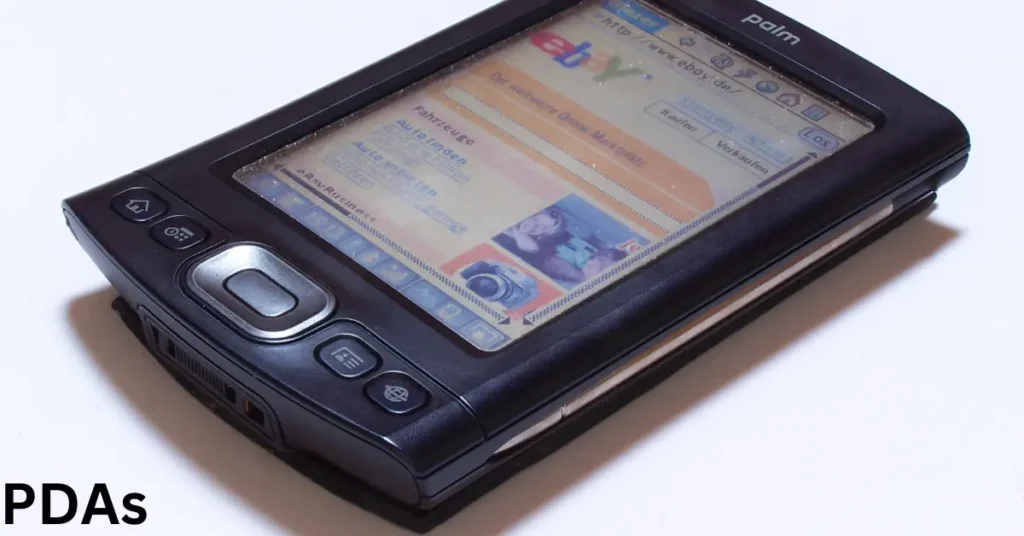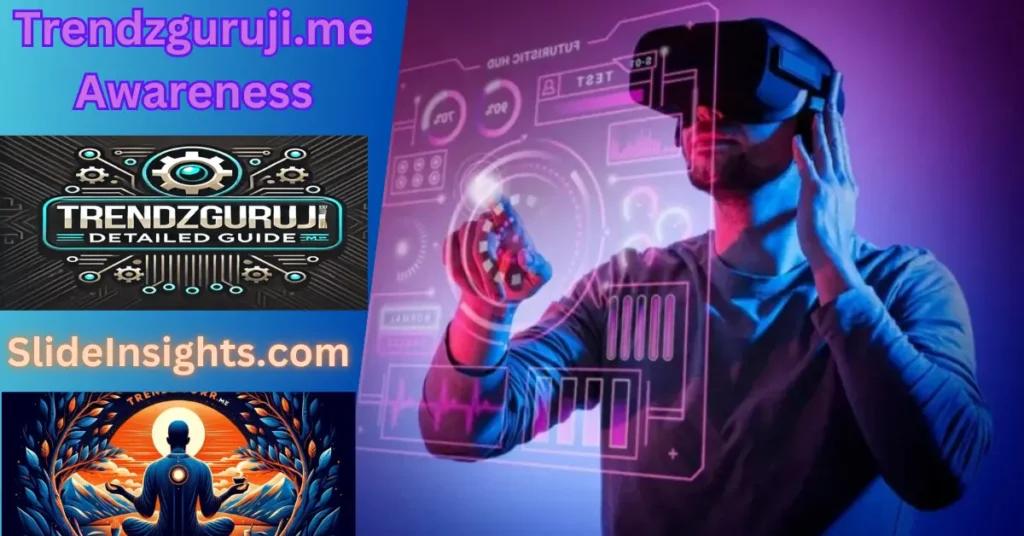In an age dominated by smartphones and tablets, it’s easy to forget the humble Personal Digital Assistant (PDAs). These pocket-sized devices were once our go-to tools for organizing our lives, keeping us on schedule, and connecting us with the world around us. While they might seem like relics of the past, PDAs still hold a special place in the hearts of many tech enthusiasts and professionals who appreciate their simplicity and functionality.
Originally popularized in the 1990s, PDAs like the Palm Pilot and HP iPAQ offered features such as calendars, contact lists, and task management—all in a compact form that fit in your hand. Unlike modern smartphones, which can often feel overwhelming with their endless apps and notifications, PDAs provided a focused, distraction-free experience. They were designed for people who wanted to streamline their tasks without the noise of social media or constant internet browsing.
What is a PDAs?
A Personal Digital Assistant (PDAs) is a compact, handheld device designed to help individuals stay organized and manage essential information. Think of it as a highly advanced planner! PDAs can store contacts, maintain calendars, and manage to-do lists, all within a device small enough to fit in your pocket.
Imagine having a notebook where you jot down homework assignments, friends’ phone numbers, and important dates, like birthdays or school events. A PDAs does all of that but with a digital flair! It features a screen to display all your information, and you can either type or write on it with a special stylus.
PDAs rose to popularity in the 1990s, serving as some of the first gadgets to help people organize their lives before the era of smartphones. While many now rely on their phones for these tasks, PDAs still hold appeal for those who appreciate their straightforward design and focus on productivity. They lack the distractions of games or social media, making them ideal for anyone looking to concentrate on work or studies.
A PDAs is like a digital assistant that simplifies organization and helps you remember important information. Although they aren’t as common today, they played a significant role in how we managed our lives before smartphones became ubiquitous!
Also Read: In4412 Regulator Garland Tx
Why Are PDAs Important?
Personal Digital Assistants (PDAs) are essential tools that help individuals stay organized and efficient in both personal and professional environments. Here’s why they matter:
1. Organization and Time Management
- Centralized Information: PDAs enable users to store all their important information—such as contacts, schedules, and notes—in one convenient location, making it easier to access and manage tasks.
- Calendar Features: With built-in calendars, users can set reminders for key dates, ensuring they never miss meetings or events.
2. Simplicity and Focus
- Minimal Distractions: Unlike smartphones, which can be filled with distractions like social media and games, PDAs offer a straightforward interface that prioritizes productivity. This helps users stay focused on their tasks.
- User-Friendly Design: PDAs typically feature simple menus and intuitive functions, making them accessible for users of all ages, including children and seniors.
3. Data Management
- Efficient Data Collection: In professional environments, PDAs are valuable for data collection and management, particularly in fields like healthcare and research.
- Customization: Many PDAs allow users to customize applications to meet their specific needs, whether for work or personal use.
4. Portability
- Compact Size: PDAs are lightweight and portable, making them easy to carry around, which is especially beneficial for those on the go.
- Long Battery Life: Many PDAs offer extended battery life compared to smartphones, allowing users to remain productive throughout the day without frequent recharging.
5. Niche Uses
- Specialized Functions: PDAs continue to be utilized in specific industries that require dedicated devices for particular tasks, such as data entry in laboratories or inventory management in businesses.
While smartphones have taken over much of the role PDAs once played, these devices are still important for their ability to help users stay organized, focused, and efficient. Their simplicity and specific functionalities make them valuable tools in a variety of settings.
Cool Brands and Models of PDAs
PDAs have been around for a long time, and there are some really cool brands and models that made a big difference! Here are a few popular ones you might find interesting:
1. Palm
- Palm Pilot: One of the first and most famous PDAs, the Palm Pilot came out in the 1990s. It was small and super easy to use, helping people keep track of their appointments and contacts. Plus, it had a cool touch screen!
- Palm Tungsten: This model was even more advanced, featuring a color screen and the ability to run various apps. It was perfect for those who wanted a bit more from their PDAs.
2. HP (Hewlett-Packard)
- HP iPAQ: The iPAQ series was known for its sleek design and powerful features. It had a bright screen, and some models even let you browse the internet. Business professionals loved it!
- HP iPAQ H1945: This model had a built-in camera and music player, making it one of the more fun PDAs of its time!
3. Compaq
- Compaq iPAQ 3765: This PDAs was popular for its ability to connect to the internet, allowing users to check their emails on the go. It also had great battery life, making it very handy for busy people.
4. Sony
- Sony Clie: The Clie series stood out with its stylish design and colorful screens. It included features like music playback and games, making it a fun choice for younger users.
- Sony Clie PEG-NR70: This model was especially cool because it had a flip screen and could be used like a small tablet!
5. Sharp
- Sharp Zaurus: The Zaurus was different from many other PDAs because it could run a version of Linux, a type of operating system. It had a keyboard, which made it great for writing notes and working on documents.
These brands and models show just how exciting and diverse PDAs can be! Even though we mostly use smartphones today, it’s fun to look back at these cool gadgets that helped us stay organized and connected.
How PDAs Compare to Today’s Smartphones and Tablets
When we think about technology, it’s interesting to compare older devices like Personal Digital Assistants (PDAs) with today’s gadgets like smartphones and tablets. Let’s take a look at how these devices compare!
1. Functionality
- PDAs: PDAs were designed mainly for organizing information, such as keeping schedules, managing contacts, and writing notes. They functioned like super-smart planners! However, they couldn’t make phone calls or take pictures like smartphones can.
- Smartphones and Tablets: Today’s smartphones and tablets can do everything PDAs did, but so much more! You can make calls, send texts, play games, watch videos, and browse the internet. They’re like mini-computers that fit right in your pocket!
2. Design and Size
- PDAs: PDAs were usually small and compact, making them easy to carry. However, they had limited screens and buttons.
- Smartphones and Tablets: Modern smartphones have larger touchscreens that allow you to see more information and use apps easily. Tablets have even bigger screens, perfect for watching videos or reading books. They might be a bit heavier than PDAs, but many people love the larger display!
3. Connectivity
- PDAs: Most PDAs had limited connectivity options. Some could connect to computers or printers, but that was about it. They couldn’t access the internet unless plugged into a computer.
- Smartphones and Tablets: Today’s devices come with Wi-Fi, Bluetooth, and cellular connections, allowing you to go online anytime, anywhere. This means you can check emails, play games, and connect with friends instantly!
4. Apps and Features
- PDAs: PDAs had basic apps for organization, but they didn’t offer the wide variety of apps we have today. They were mainly focused on productivity.
- Smartphones and Tablets: Modern devices have millions of apps for almost anything you can imagine! Whether you want to play games, learn a new language, or edit photos, there’s an app for that. This makes smartphones and tablets super versatile and fun to use!
5. Battery Life
- PDAs: PDAs often had excellent battery life because they used less power than modern devices. Some could last several days on a single charge!
- Smartphones and Tablets: While smartphones have improved battery life, they still need to be charged more frequently due to all their extra features. Some can last a full day with regular use, but heavy users might need to recharge before bedtime.
While PDAs were fantastic tools in their time, today’s smartphones and tablets have taken organization and connectivity to a whole new level. They are more powerful, versatile, and enjoyable to use, making it easy to stay connected and entertained. PDAs will always hold a special place in tech history, but it’s clear that modern devices have surpassed them in many ways!
PDAs in Niche Uses Today
Even though smartphones and tablets are super popular, PDAs still find a place in specific areas where they are really useful. Here are some ways PDAs are used today in niche settings!
1. Healthcare
- Data Collection: In hospitals and clinics, doctors and nurses often use PDAs to gather patient information and manage their schedules. These devices let them access crucial data quickly, free from the distractions typically found on smartphones.
- Medical Apps: Some PDAs come with specialized medical applications that help healthcare professionals track patient health records and treatment plans, leading to better care overall!
2. Field Work and Research
- Environmental Studies: Scientists and researchers working outdoors use PDAs to gather data about plants, animals, and weather conditions. Their rugged design makes them perfect for fieldwork, where smartphones might not be as reliable.
- Surveying and Mapping: In fields like construction and geography, PDAs assist in collecting measurements and mapping areas. They help workers stay organized by keeping all their data in one convenient device.
3. Education
- Student Learning Tools: Some schools utilize PDAs as educational resources for students. They can hold textbooks, notes, and schedules, helping students manage their schoolwork without the temptations of social media.
- Special Needs Education: PDAs can be especially helpful for students with special needs, providing a simple way to communicate and stay organized. They can help these students remain on track and feel more independent.
4. Business and Productivity
- Project Management: Certain businesses still use PDAs for managing tasks and projects. These devices allow employees to keep track of their work without being overwhelmed by notifications from smartphones.
- Sales and Inventory: Salespeople often use PDAs to check inventory and place orders on the spot, helping them stay efficient while providing quick access to product information.
5. Data Entry and Collection
- Event Management: At events like concerts or festivals, PDAs are used to gather data on ticket sales and attendance, ensuring that organizers can keep everything running smoothly.
- Surveys and Feedback: Companies can also use PDAs to collect real-time feedback from customers during events, giving them insight into how people perceive their services or products.
While PDAs may not be as common as they once were, they still play an important role in certain fields today. Their simplicity, durability, and focused features make them valuable tools for healthcare, research, education, and business.
Advantages and Disadvantages of PDAs
PDAs have their own set of benefits and drawbacks, especially when compared to modern devices like smartphones and tablets. Let’s take a closer look at the pros and cons of using PDAs today.
Advantages of PDAs
| Advantages |
| Simplicity and Focus: PDAs have a simple design and easy-to-use interface, helping users concentrate on their tasks without distractions. Unlike smartphones, which can be filled with notifications and apps, PDAs keep things neat and organized. |
| Long Battery Life: Many PDAs are built to last for a long time on a single charge, making them perfect for people who need a reliable device for extended use without frequent recharging. |
| Durability: PDAs are often designed to be tough and durable, making them suitable for various environments, like construction sites or outdoor research. They can handle rough treatment better than more delicate devices. |
| Specialized Functionality: In specific fields like healthcare and research, PDAs can have specialized applications tailored to unique needs. For example, medical professionals can use them to efficiently manage patient records. |
| Affordability: Generally, PDAs are more budget-friendly than the latest smartphones and tablets, making them an attractive option for individuals or organizations looking to manage data and tasks without overspending. |
Disadvantages of PDAs
| Disadvantages |
| Limited Features: PDAs don’t have many of the advanced features found in smartphones and tablets, such as high-quality cameras, internet browsing, and a wide variety of apps. This makes them less versatile for everyday use. |
| Obsolete Technology: With the advancement of technology, many PDAs are now considered outdated. Finding support and accessories for them can be difficult, as manufacturers focus more on smartphones and tablets. |
| Small Screen Size: PDAs usually have smaller screens compared to tablets and smartphones, which can make it tough to read text or view images, especially for tasks requiring more screen space. |
| Limited Connectivity Options: While some PDAs offer basic connectivity, they often lack the advanced features like Wi-Fi and 4G/5G connections that modern smartphones provide. This can limit their usefulness for those needing regular internet access. |
| Not as User-Friendly: For some users, especially those accustomed to smartphones, switching to a PDA can feel like a step backward. The learning curve can be steep for those unfamiliar with the device’s unique features and limitations. |
While PDAs have specific advantages that make them useful in certain situations, they also come with drawbacks that can limit their effectiveness compared to more modern devices. Knowing these pros and cons can help users decide whether a PDAs is the right choice for them.
Bonus Point PDAs
- Great for Organization: PDAs are excellent for keeping everything in one place. They can store contacts, calendars, to-do lists, and notes, helping users stay organized without the clutter of papers or multiple devices.
- Ideal for Professionals: Many professionals, especially in fields like healthcare and research, find PDAs helpful because they can streamline tasks and improve efficiency. The ability to access critical information quickly is a significant advantage.
- Tactile Experience: Some users appreciate the physical buttons on PDAs, which can provide a more tactile experience compared to touchscreens. This can make typing and navigating easier for those who prefer it.
- Customizable Applications: Certain PDAs allow users to customize their applications to suit their specific needs, making them versatile tools tailored to individual preferences.
- Privacy and Security: PDAs can be more secure than smartphones because they often lack internet connectivity. This can help protect sensitive information from potential online threats.
- Less Distraction: Without the multitude of apps and notifications typical of smartphones, PDAs can help users focus better on their tasks, making them great tools for productivity.
- Quick Access to Information: PDAs enable users to access important data quickly, whether it’s a contact number or a meeting time, which can be crucial in fast-paced environments.
- Lightweight and Portable: Most PDAs are lightweight and easy to carry, making them convenient for people on the go who need to manage their schedules and tasks without bulk.
- Nostalgia Factor: For tech enthusiasts and collectors, PDAs represent a fascinating part of technology history. Using or owning one can evoke a sense of nostalgia for the early days of mobile computing.
- Learning Opportunity: For students and beginners, using a PDAs can be a valuable learning experience, helping them understand the basics of digital organization and time management before transitioning to more complex devices.
Conclusion
PDAs, or Personal Digital Assistants, may seem old-fashioned compared to today’s smartphones and tablets, but they still have some great advantages. They help users stay organized, are easy to use, and have long battery life.
While they might not have all the fancy features of modern devices, PDAs are perfect for people who want a simple way to manage their tasks without distractions. So, if you’re looking for a reliable tool to help you stay on top of things, a PDAs might be just what you need!





